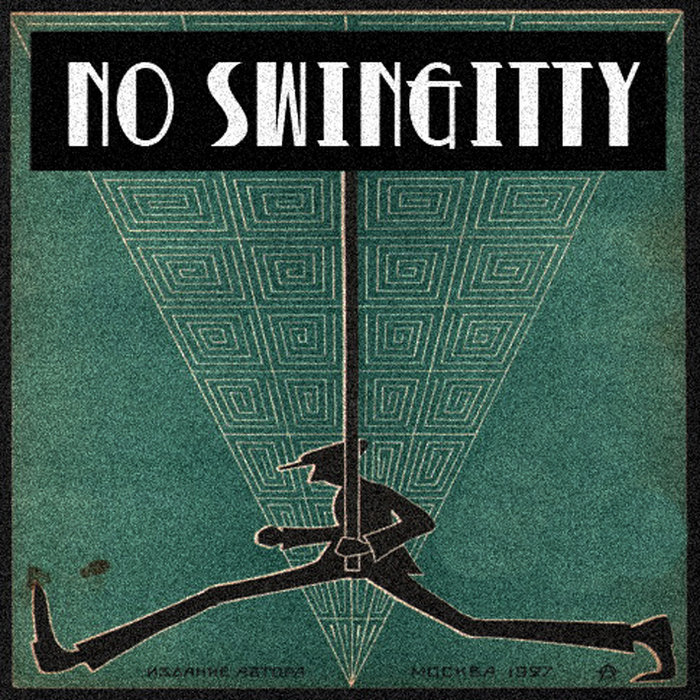
No Diggity (Minimatic swing version) – Minimatic
this blog is GROOVY – check out great Soul, Funk, Jazz, Hip Hop, Bass, Breaks , Reggae, House n many more TUNES
Hey there, groovers! Let’s dive into the wild and wacky world of a little-known musical genre called No Swingitty. Picture this: it’s like funk but without the bounce, jazz without the swing, and all wrapped up in a funky package that defies definition. So grab your favorite snack, kick back, and let’s get funky!
You might be wondering what in the world No Swingitty even is. Well, it’s one of those sonic experiments born from mixing styles that just didn’t want to fit into neat boxes—sort of like that old couch you can’t throw out because it holds too many memories (or crumbs).
The term “No Swingitty” emerged in the late ’70s when musicians started playing around with rhythms that were neither here nor there; they were somewhere delightfully off-kilter. It featured heavy bass lines paired with syncopated guitar riffs and quirky electronic effects—a real hodgepodge meant for groove enthusiasts who love to think outside the box.
Just like any great recipe requires some solid ingredients, No Swingitty pulled influences from various genres:
Funk: We can’t forget our buddy George Clinton of Parliament-Funkadelic fame! If there was ever a spirit guide for this genre, it would be him strutting across stage in outrageous outfits.
Jazz: While most jazz has its characteristic swing (you know how they say “It don’t mean a thing if it ain’t got that swing”), No Swingitty took everything jazzy and twisted it into unexpected lunacy.
Psychedelic Rock: Thanks to wacky artists like Frank Zappa who played with time signatures as easily as he changed his socks (he had quite an eclectic collection), we find ourselves bobbing our heads to tunes that make us scratch ours.
In true anti-establishment style reminiscent of punk rockers cozying up next to disco balls at parties—musicians within this genre became known for their rebellious spirit! Notable figures include:
Carl was known more for his attitude than his talent; legend has it he once staged an impromptu concert on top of a moving bus while screaming about rhythm’s injustices. His fans? Well… they weren’t exactly sure what was happening either!
Gary had one rule: no rules! He recorded an entire album using only kitchen utensils which led critics to label him as “the culinary maestro” before realizing he couldn’t cook worth beans (but boy did he make people dance).
This dude brought confusion right onto the turntables! With mixes so unpredictable they made people question reality itself—it became hard distinguishing whether you were listening or dreaming during his shows!
As we journey through these eccentricities spotted within our beloved genre’s history let’s sprinkle some laughter along the way:
Ever heard about Bongo Bob? He forgot how to play anything other than bongos after taking some intense percussion lessons—you could hear him jamming away everywhere except where guitars usually hang out!
One band tried performing naked on stage but ended up getting caught in their own stage lighting; turns out no one wants flashlight-shaped tan lines!
A famous singer-songwriter accidentally wrote three songs simultaneously while trying not to step on his pet turtle named Slinky. Slinky later became part-time mascot for their fan club.
Though mainstream music often overlooks No Swingitty now—there continues being pockets where folks jam together simply because they love letting loose without boundaries! Local underground scenes are home base for designers embracing weirdness layered atop catchy beats.
Now bands continue experimenting mixing tuneful madness creating unique flavors living life unapologetically—in fact sometimes old-school vinyl records spin through hipster cafes because why not bring back past joy?!
And if you’re lucky enough—you might catch someone rocking retro moves days gone by still celebrating joyous improvisation today masked under fancy hats & cool shades looking fresh while digging deeper exploring grooves further blooming beyond traditional realms exceeding expected experiences!
So remember folks—the beauty behind music lies not only in perfect notes woven carefully therein but also celebrations displaying creative wonderment unbounded via raw energies vibrating between performers audiences alike reaching higher states awash thriving moments flipping each day ahead sans stressors lingering beneath clouds drifting past horizons promising brighter skies laying foundations anew
Next time you groove on down listen closely perhaps something inspiring may waft through air reminding clans dancing together remains source divine inspiration lives shared brightening moods illuminating richly textured themes inviting everyone jumping feet shaking hips shimmering happiness spreading vibes long forgotten resurrected magic transcending mere sound reverberating souls intertwined symphony existing outside ordinary conventions breaking free knowing full well guarantees endless escapades await calling boldly answering quests returning blissful journeys awaiting completion riveting cheers rejoicing surrounding hearts scattered communities boundless celebrations nurturing vibrant existence forevermore blessed everlastingly within essence found keeping spirits alive letting echoes linger always maintaining sweet notes flowing endlessly onward onward.
Keep those vibes going strong ‘cause every beat matters—even silly ones—and never forget… grooviness prevails above all else! ✌️🎶

No Diggity (Minimatic swing version) – Minimatic